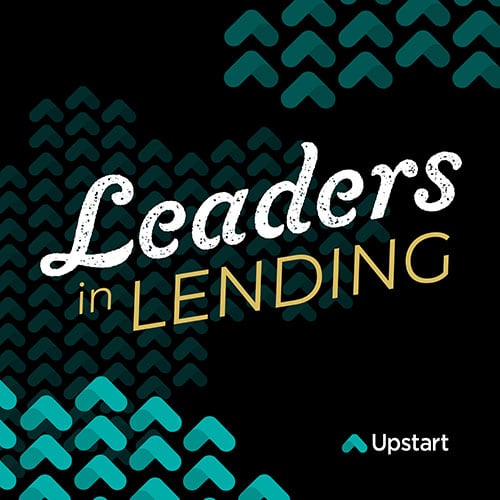Leaders in Lending | Ep. 53
Maintaining the Value Chain through Front- and Back-Office Operations
This week, Alex Balagour talks about the value chain and shares his thoughts on digital technology, customer experience and the future of banking.


GUEST SPEAKER
Alex Balagour

ABOUT
Citizens and Northern Bank
Citizens and Northern Bank's mission is to create value through lifelong relationships with its neighbors in Pennsylvania and New York. C&N offers a variety of banking solutions, including checking accounts, savings accounts, mortgages, business loans and more. C&N believes managing finances should be a fulfilling, trouble-free experience so that customers can spend less time making a living and more time making a life.
Key Topics Covered
- The case for offering fewer, more flexible products
- How to approach a frictionless user experience
- Digitizing systems without sacrificing relationships
- The benefit of improving back-end processes

“A blockchain-based universal identity provider would take a ton of friction out of the digital onboarding experience.”

"Regulations have done a lot to kind of keep consumers safe, but at the same time, they introduce artificial constraints, which makes it harder to innovate on the product side."

“The banking back office is as much a part of the customer experience as getting the customer into the bank.”
EPISODE RECAP & SUMMARY
With a reputation as historical and prestigious as Citizens and Northern's (C&N), it’s imperative to continue that legacy even through the turbulent waves of digital transformation.
On this week’s episode, Alex Balagour, EVP and Chief Information Officer at Citizens & Northern Bank, joins the show to talk about how the bank is preserving their relationships in the midst of an enormous, global transformation.
You’ll learn about…
- The case for offering fewer, more flexible products
- How to approach a frictionless user experience
- Digitizing systems without sacrificing relationships
- The benefit of improving back-end processes
Here’s what you need to know:
Frictionless digital experience
As digital transformation unfolds, consumers are looking for new kinds of product offerings that aid in their financial wellness.
Balagour and his team are looking into where they can expand C&N’s offerings to cater to more customer needs.
The key?
“I am looking for less products and more flexible products,” says Balagour. “I have dozens of financial institutions, multiple dozens of different account types. And I'm kind of wondering, why do I need that many?”
Considering his position as head of technology, he aims to simplify the customer experience as much as possible.
Making corporate and business technology more consumer-friendly is a priority.
Likening the simplification process to Facebook’s easy usability, he claims that customers shouldn’t need a training manual to operate deposits, credits, transfer, loans, etc.
C&N has made strides to consolidate bank managements by providing more flexible options—options that can leverage smaller lines of credit and enable buy now pay later methods at every store.
Blockchain-based universal identity provider
According to Balagour, the main obstacle to a frictionless user experience is identity tracing.
With so much time spent verifying a single consumer’s identity in a digital world, it detracts from the time needed to optimize matching that individual with the banking product they actually need.
With a universally-accessible, blockchain-based central identity provider, a lot of friction can be removed from the infamously laborious onboarding experience.
“We all have social security numbers. That's not really a far stretch from using that as a universal login yet it does not exist, and the network effect is lagging,” says Balagour.
The ability to use what exists in the blockchain and gain more verification would be far more effective than a standard database.
Balagour claims that multiple startups are currently working on identity provisioning through blockchain technology, but they lack the volume of identities needed to build it out.
Privacy
With an interest in moving toward a conglomerated pool of data identity, it’s natural that many consumers might feel hesitant about handing over their sensitive information.
While Balagour himself tends to guard his personal data, he has also learned that some of the time, consumers are open to granting access to their trusted establishments if it means it makes their lives easier.
A marketing instructor in graduate school once told him that, “I want to tell everybody as much as I can about my preferences, so they can market and sell to me better; that's going to make my life easier”, proving that there’s a market of people who are willing to volunteer their data.
Ultimately, he describes, it's a matter of expressed preference versus communicated preference.
People are more likely to offer information when there’s a transparent exchange. For example, if an organization gives 2 percent off products, many individuals are more likely to part with sensitive data if there’s a clear trade.
Fintech
As many banks continue to innovate through the digital transformation, a trend of outsourcing work to specialized fintechs has taken off.
While Balagour believes in the value of going down the third-party route when a project remains outside of a bank’s capabilities, he doesn’t see a point in differentiating financial institutions from “fintechs."
As he points out, the first computer that went into commercial operation was at Bank of America, and so measured against the definition of the fintech— “a banking industry with a general ledger going electronic”— a bank is inherently a tech company.
According to Balagour, banks are, “the grandfather of all fintechs. It's really a different way of outsourcing and we, as an industry, we've been doing this for decades”.
Investments in digital technology
A bank with a 165 year old heritage can’t lose sight of their carefully-cultivated community.
Understanding how the community is shifting is integral to adapting to their needs, especially in a new digital landscape.
A solid first step is developing the efficiency of back-office operations.
According to Balagour, “so many community banks out there still have a lot of people manually doing things in the back office. Frankly, there are constraints to growth."
With a mass resignation on employers' hands, having optimized processes already in place can help a company grow without hiring ten people.
Data and analytics is another area that many banks outsource as it requires specific computational power, processing and scale that many community banks are unable to afford.
Lastly, strong customer experience is a must and is typically outsourced to fintechs. If a bank’s app isn’t designed for smart phone frameworks, people will make the switch to a new institution to remove pain points.
Customer experience
A large part of enhancing the customer banking experience is about onboarding the customer.
Where does the onboarding experience start?
In the banking back office.
Depending on customer preference and context, they’ll at some point want to get in touch with a representative in real time.
It’s in those moments that a powerful back-end system shines.
Having invested in a program that measures risk and prioritizes those customers who need more aid during critical situations allows both sides to benefit.
Stay tuned for new episodes every week on the Leaders in Lending Podcast.





